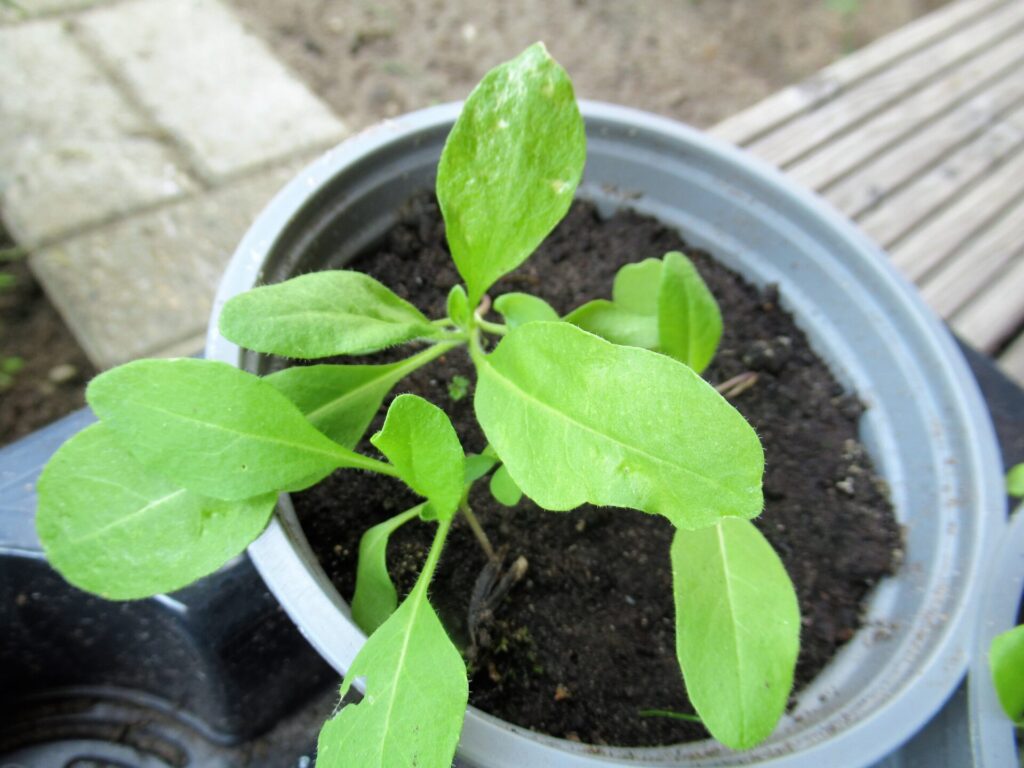
Hello!
Remember the woad seeds I sowed in June? I received them as part of a project aimed at using more local wool and dyeing it with local dye stuffs too. That seemed like an interesting idea and woad can give a beautiful blue colour, so I thought I’d give it a try on a small scale.
Now, 3 months after the start of my woad adventure, it’s high time for an update. It’s not all good news I’m afraid. At first everything went well. Most of the seeds germinated and I had a number of really healthy looking plants (photo above). I planted them out around mid-July. Half of them in a sunny spot next to our garden shed, and the other half behind a big rose bush.
Below you can see the plants several days after planting them out. Already, things were not looking good at all.
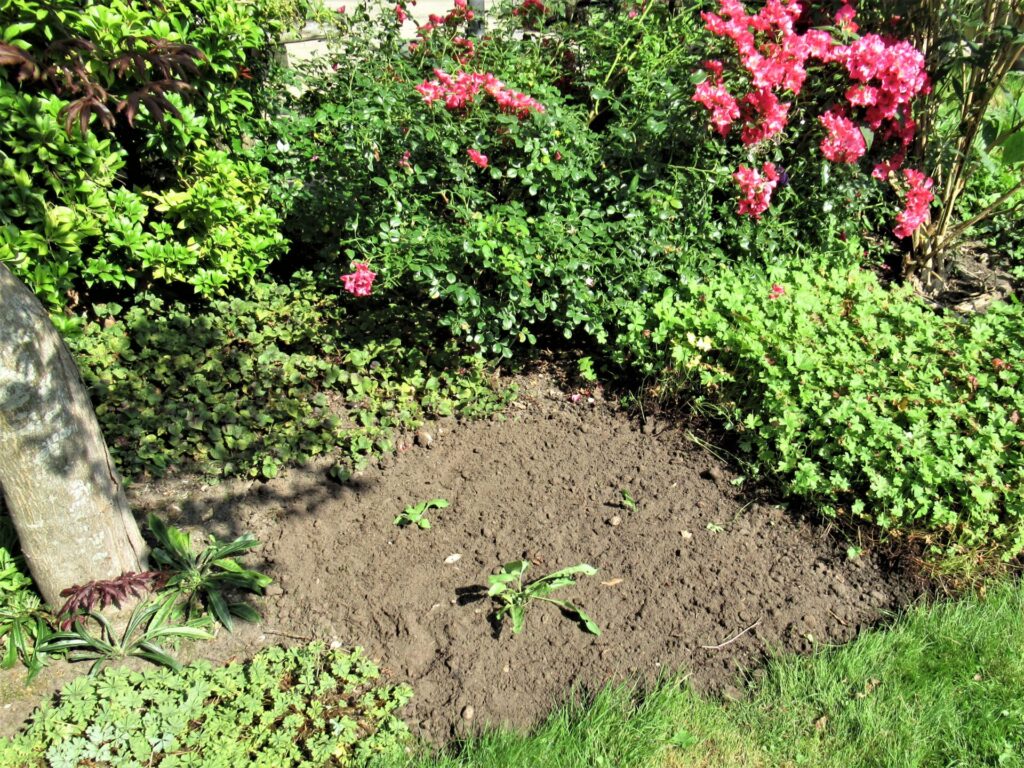
Some of the plants were still sort of okay, some had almost disappeared. Uh-oh! Rainy weather = slug weather!
Several years back, we emigrated large numbers of slugs from our garden. We (read: my husband) collected them with BBQ tongs, put them in a bucket with a layer of water and emptied the bucket on a piece of land where the slugs wouldn’t bother anyone and would be much happier (or so we told ourselves.)
We soon learnt that the bucket shouldn’t be left standing for too long or the slugs would crawl out. Ieuw!
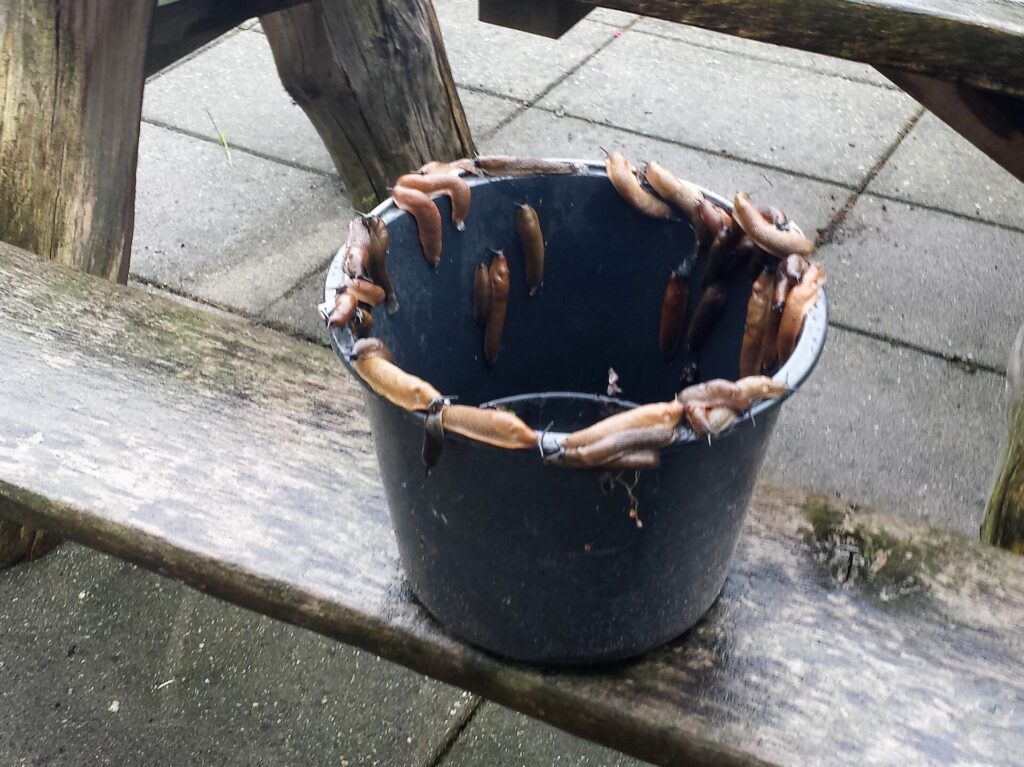
Maybe we should have mounted another slug removal campaign this year, but we didn’t. And the result is that now, 2 months after I planted them out, one woad plant looks reasonably okay.
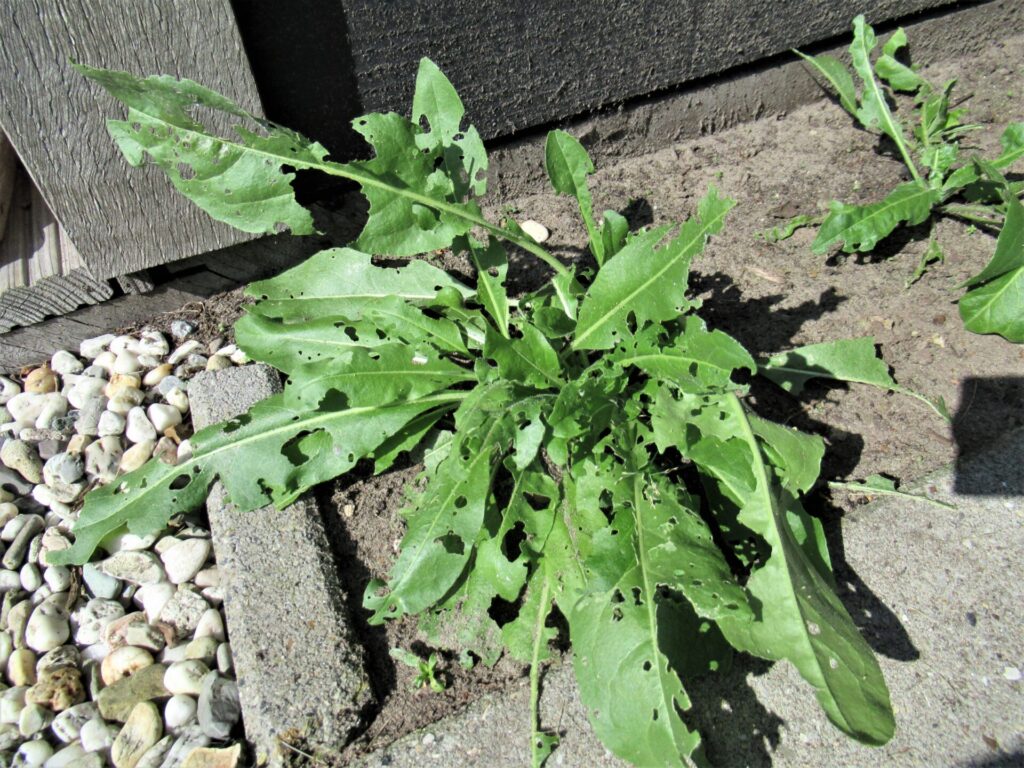
One has disappeared completely. And the rest looks… well, see for yourself:
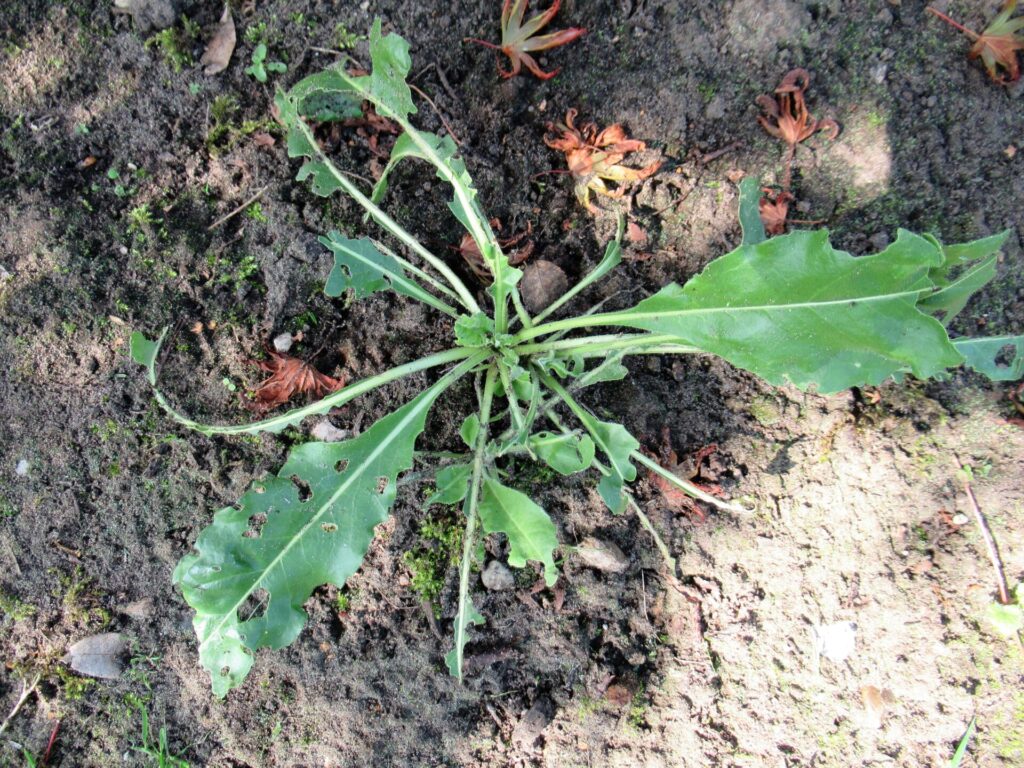
I recently learnt that only fresh woad leaves from the first year’s growth can be used. Dried and older leaves do not give off any colour. I also found out that at least 250 g/½ lb of fresh leaves are needed for a 9 litre/2 gallon dye vat. Even if my plants had thrived, I wouldn’t have come close to that, but that was never the plan.
The plan was that small woad growers like me would bring their 10 or 20 grams of fresh leaves to a stall at a wool event, where together they would make a great dye vat. Unfortunately the wool event was cancelled because of Covid-restrictions. Oh well, that’s life at the moment. At least it’s been an interesting experiment. The dyers have found enough leaves for their vat elsewhere and I now know a lot more about woad.
Meanwhile I have started spinning the lovely blue-and-green merinowool-and-silk gifted to me by a friend. She gave me two batches of spinning fibre of 100 grams each.
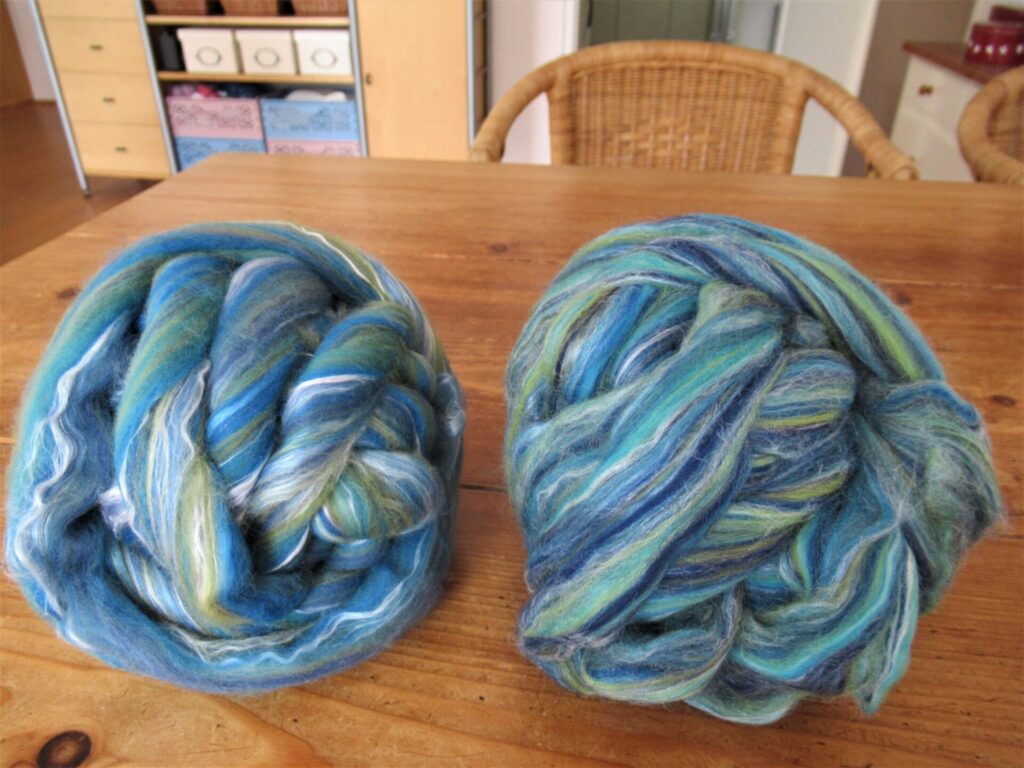
When I took them out of their bags, I noticed that although they were the same colourway, they were very different, like two balls of yarn from different dye lots. Can you see it?
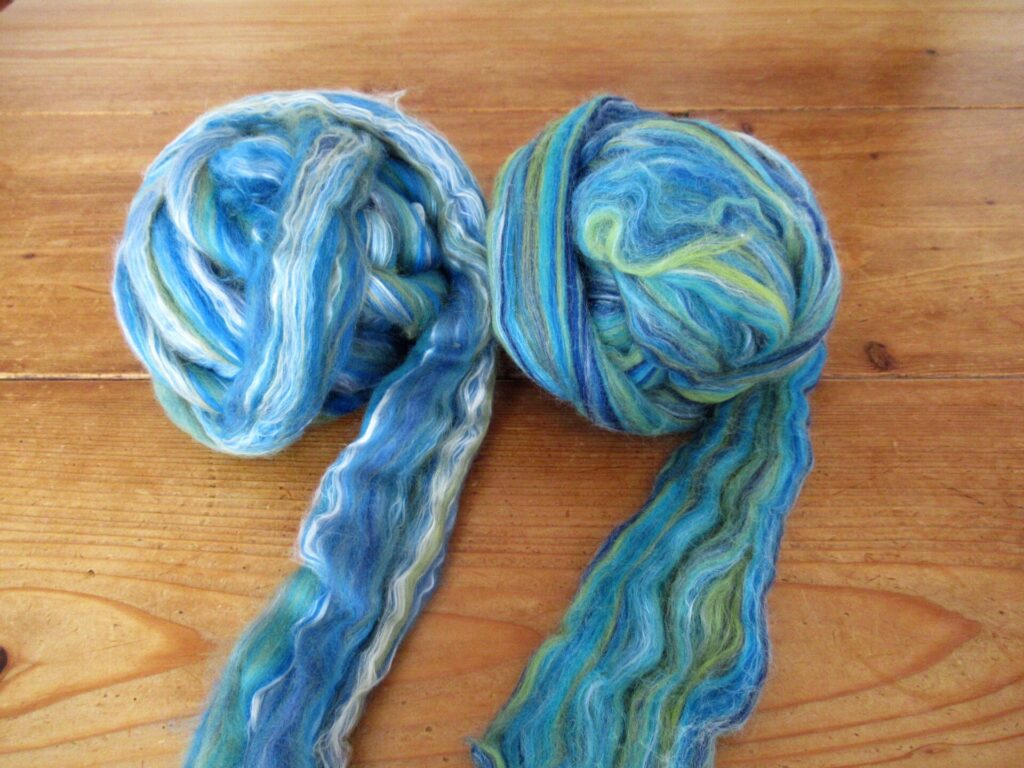
To solve the problem, I spin small portions from the two batches alternately. The result is a beautiful blend of blue, green, white and turquoise with the various colours still distinguishable.
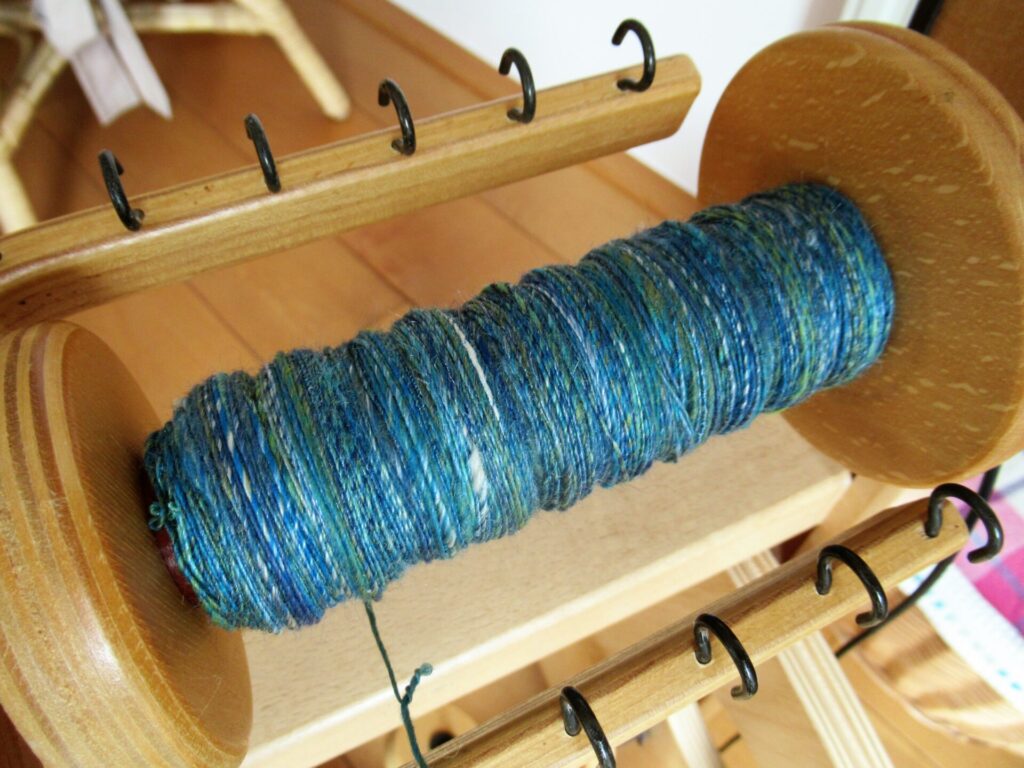
Spinning it is like having a piece of mermaid’s tail in my hands. Not just because of the shimmery blues and greens, but also because it’s slippery. That is why I am spinning the fibre ‘from the fold’ as it is called. Some people hold a ‘fold’ of slippery fibres like these folded between their fingers, but I prefer wrapping it around my thumb.
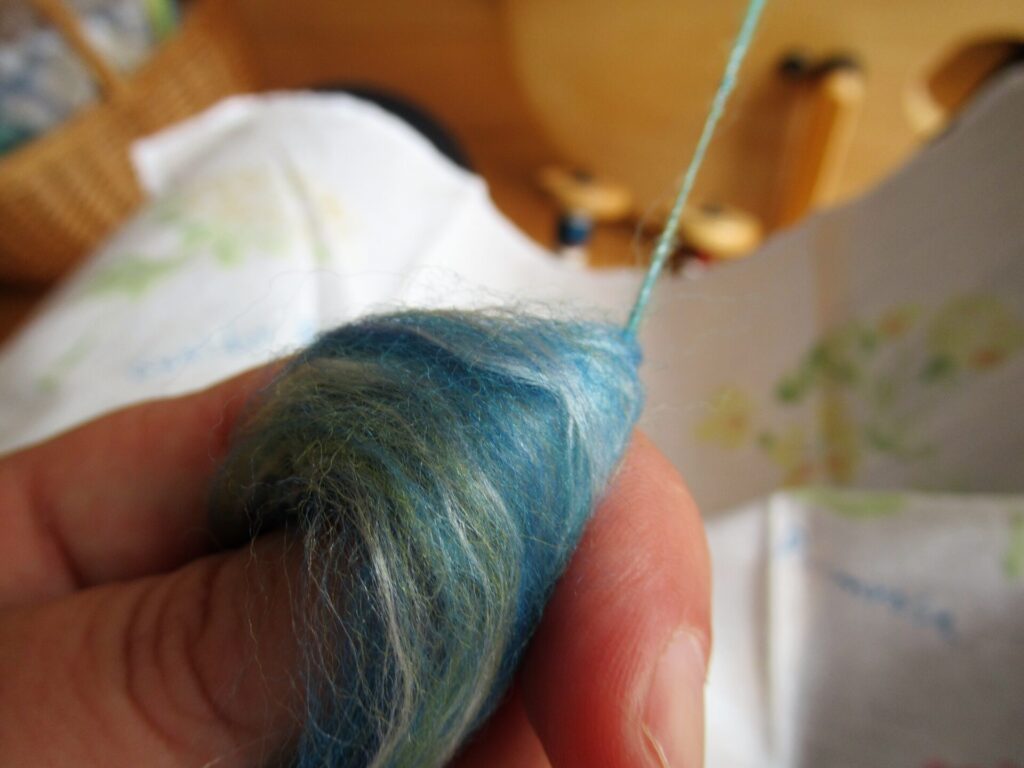
Spinning it like this, gives me more control over the fibre.
Spun up and plied, the 200 grams would be enough for a good size shawl, but I’ve decided to spin it out to enough for a sweater by combining it with something else – 600 grams of wool in a colourway called… (drum roll)… WOAD!
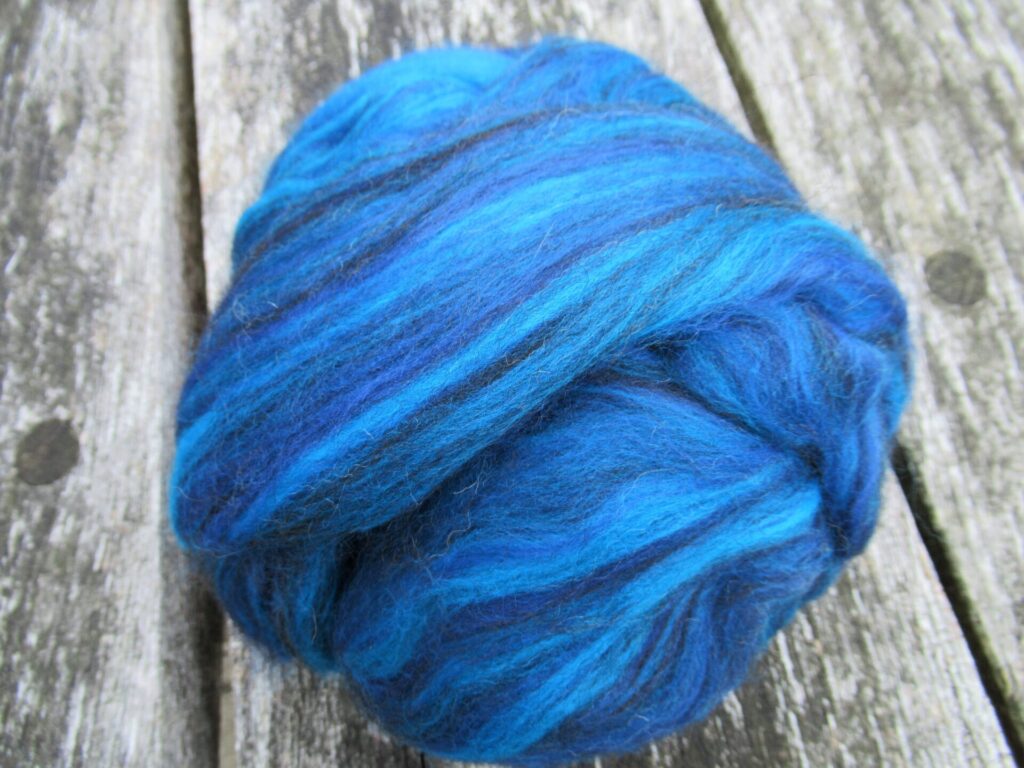
This, too, consists of various shades: black, cobalt and turquoise. A sea of blues to go with the mermaid’s tail.
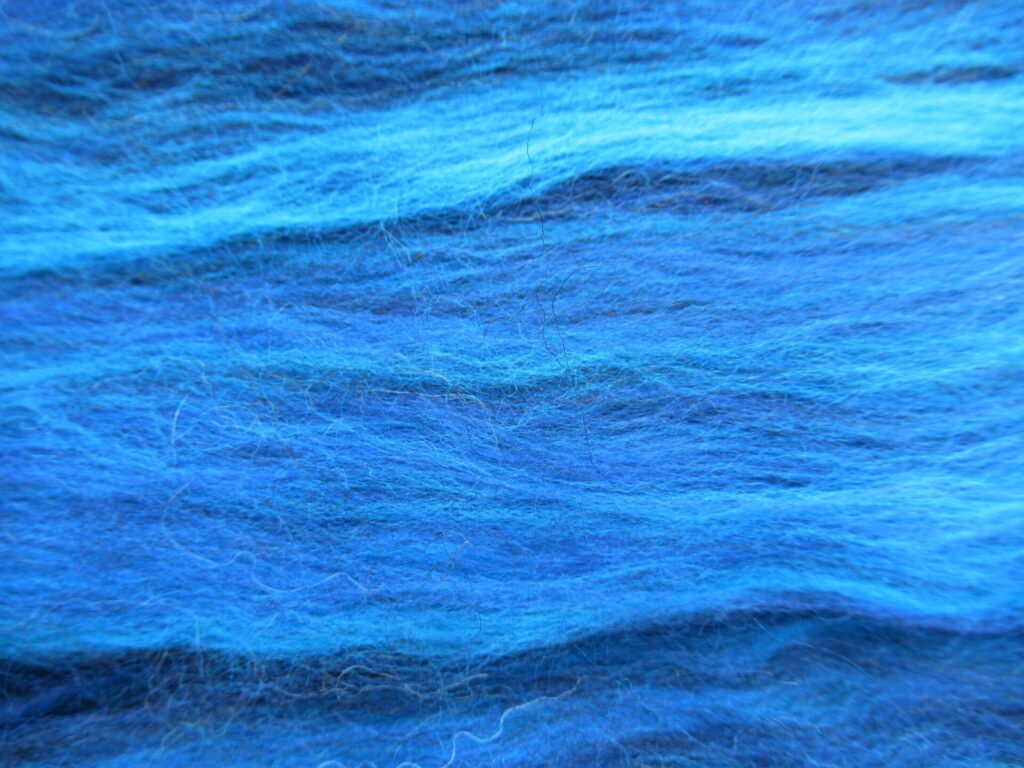
But unlike the mermaid’s tail fibres, the different shades can no longer be distinguished when this wool is spun. Everything blends together into a beautiful deep but not very dark blue. I’ve tried a little bit out.
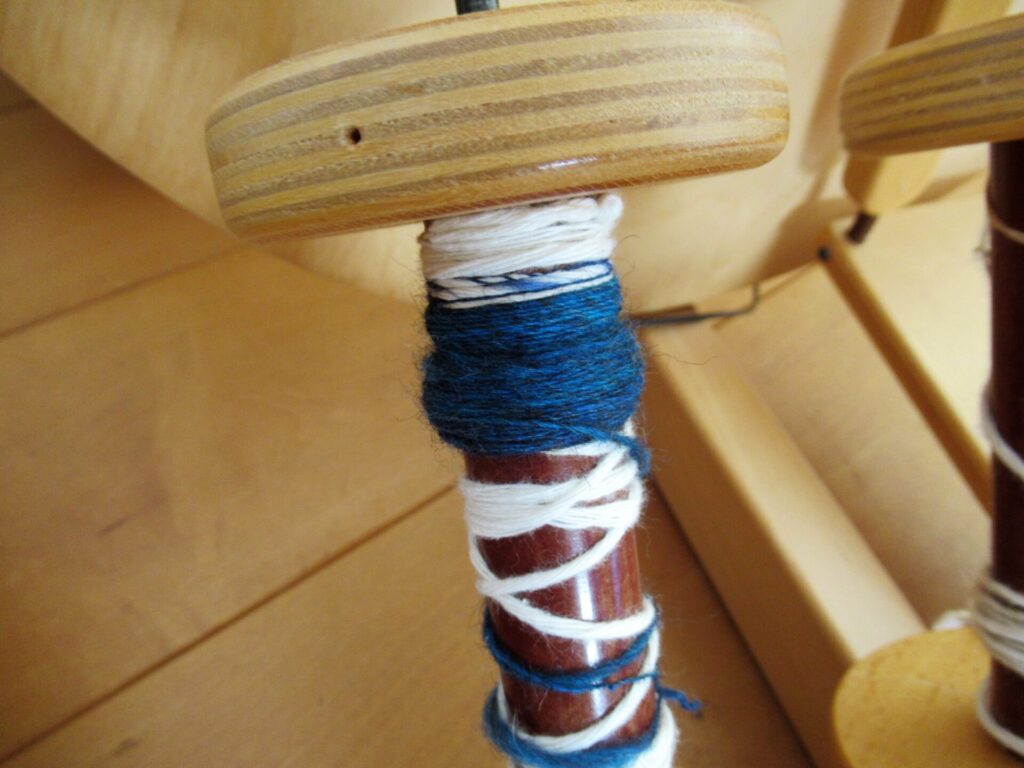
This wool (a blend of Zwartbles and organically farmed Merino) is not dyed with woad, but the colour is similar to what can be achieved with woad (if the slugs leave some).
This woad adventure (the whole process of spinning, plying and knitting up this mountain of fibre) is going to take a long time, I expect. Especially because I also have many other projects on the go. I’ll show you my progress when there is something worth showing. But first more about some of my other projects over the coming weeks. Bye for now! xxx
PS More info about the local wool & woad project can be found in this blog post.
Wonderful experiment with disappointing but still useful results. I love the colour of the combined batches of the merino/silk blend. Looking forward to seeing the finished knitted project from your spun wool.
We also tried relocating the local slugs who treat the garden as their personal salad bar, however, many more have taken up residence in their place.
Haha, it’s a never-ending story, this slug story. It’s good to ‘see’ you again, Wendy! I hope your house spared during the terrible floodings in June.
You could try sprinkling crushed eggs shells round those plants which need protecting from slugs. Opinion seems to be a bit divided on effectiveness. The only alternative is, of course, plants which slugs don’t like so act as a deterrent. We like geraniums. Lavender is another possible. Good luck. They are really horrid things, aren’t they, but the birds seem to enjoy them. Liz
Thanks for the tips. I’ve given up on the woad for this year, but might try again with better anti-slug measures next time around.